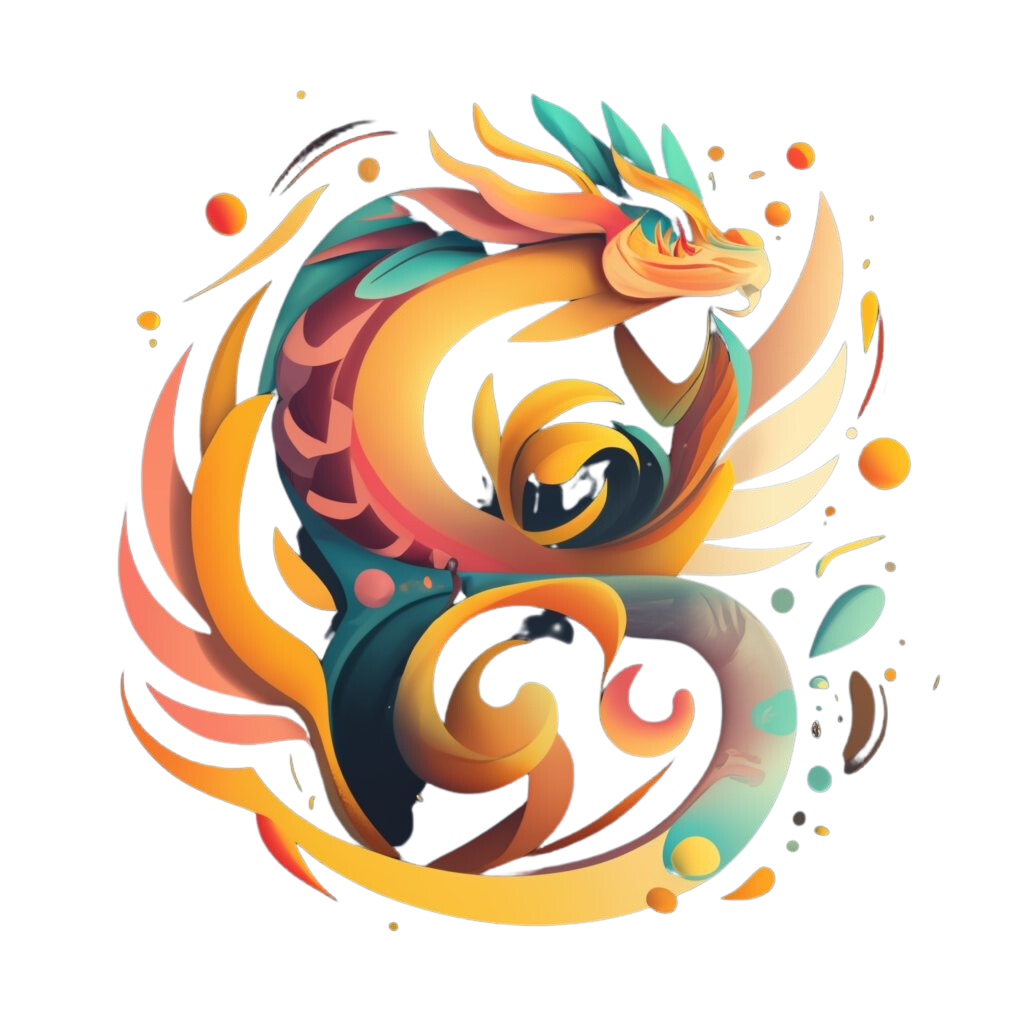What secrets lie behind Armenia’s ancient myths—where dragons, spirits, and gods once walked among humans? Armenia’s mythology is a blend of pagan, Zoroastrian, and early Christian traditions, creating a rich tapestry of mythical beings that shaped the nation’s identity.
This article explores the most fascinating Armenian mythical creatures, their cultural meaning, and the stories that made them legendary.
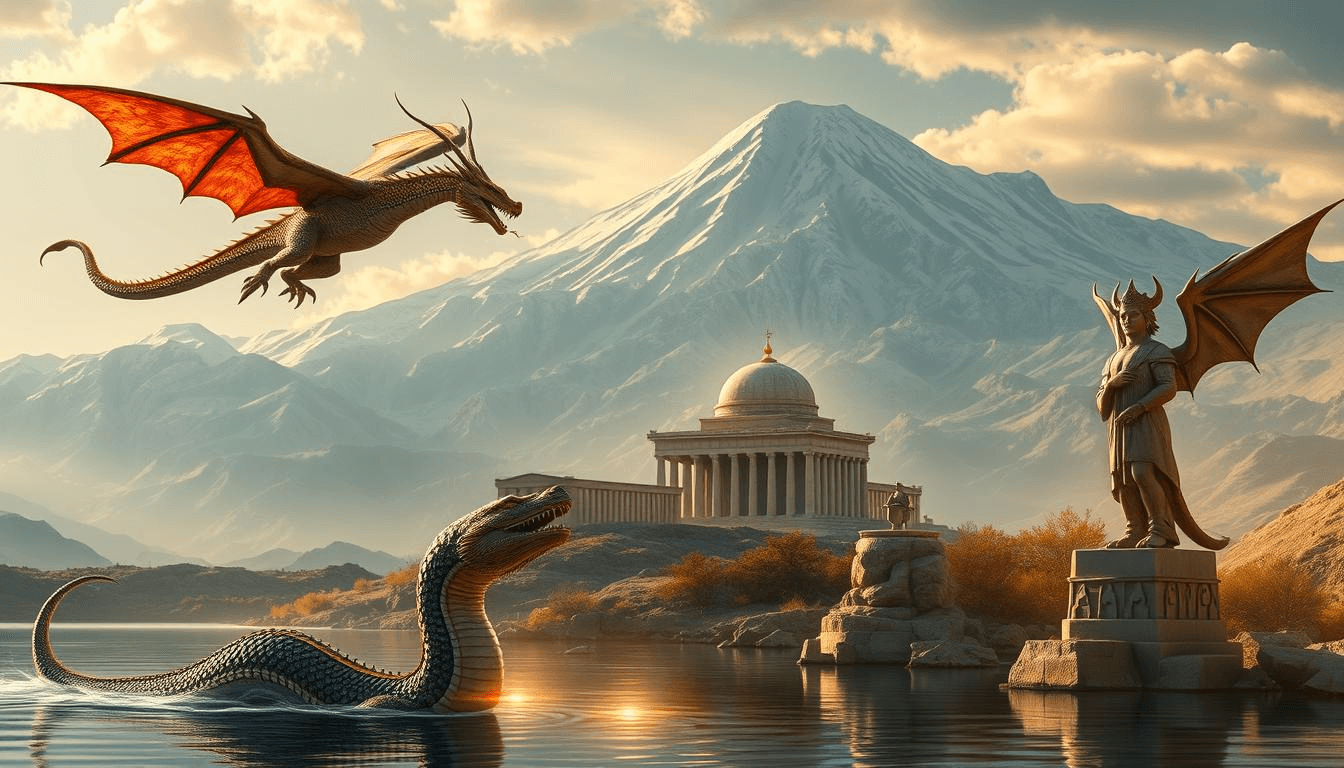
Historical & Cultural Context
Understanding Armenian mythical creatures begins with its history. Armenia sat at the crossroads of ancient civlilizations, absorbing influences from Urartian, Persian, Greek, and Zoroastrian traditions.
Origins of Armenian Mythology
Before Christianity, Armenia had a pantheon of gods tied to nature, fertility, and war. Stories were passed down orally, with dragons, spirits, and heroic figures at the center. These myths explained creation, weather, and the balance between good and evil.
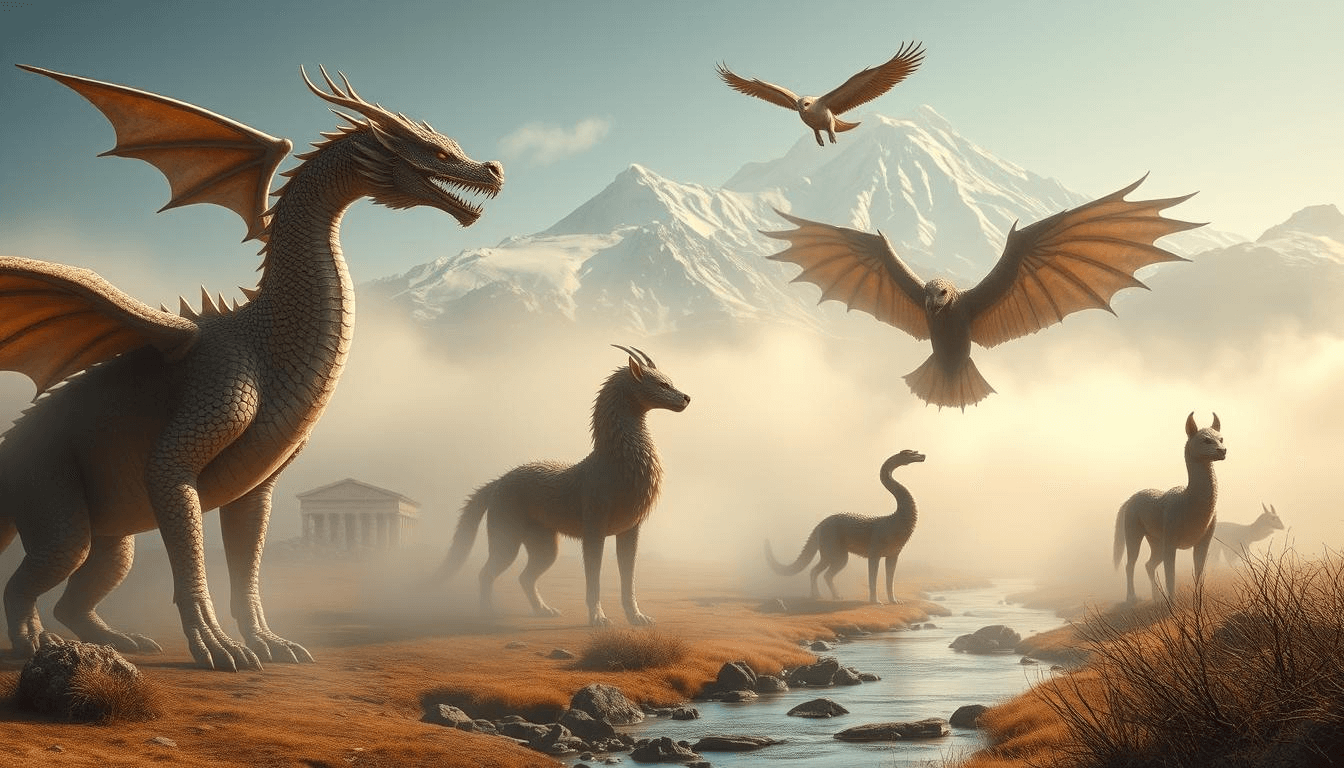
Myths in Armenian Society
Myths were not just entertainment. They connected communities to rituals, landscapes, and shared identity. They explained disasters, celebrated victories, and reminded people of their moral duties.
Major Mythical Creatures of Armenia
Armenian mythology is full of legendary beings, each carrying symbolic weight.
Vishap — Dragon of Water, Storms, & Mountain
The Vishap is a dragon-serpent tied to water, storms, and mountains. It represents both creation and destruction—capable of bringing life-giving rain or devastating floods. In many tales, heroes battle Vishaps to restore balance to the world.
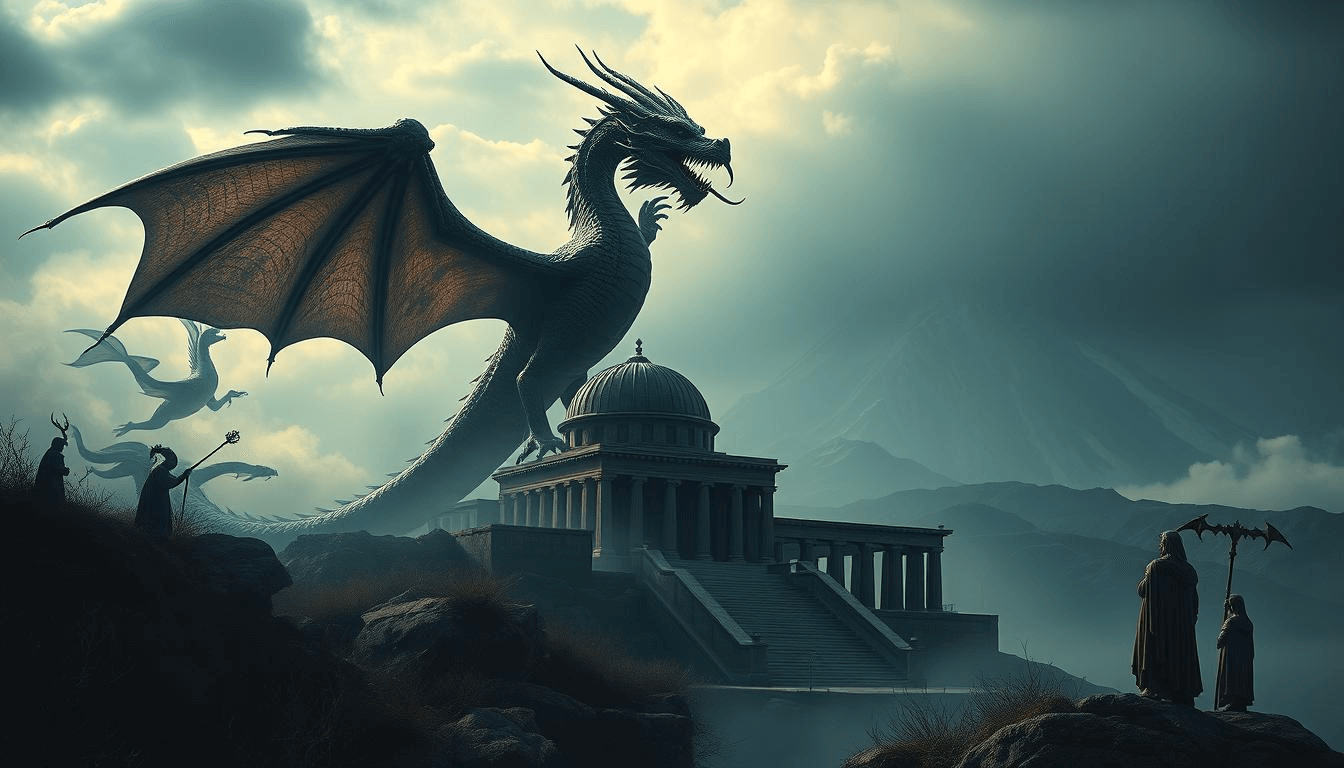
Aralez — The Resurrecting Dog-Spirits
The Aralez are loyal dog-spirits who lick the wounds of fallen warriors to bring them back to life. They symbolize hope, loyalty, and the honor of the heroic dead.
Azhdahak — The Serpent-King
Azhdahak (or Azhi Dahāka) is a multi-headed serpent-king and embodiment of evil. Myths tell of heroes who must defeat him to free the land from chaos. These stories reflect the eternal struggle between good and evil.
Other Mythical Beings
- Devs – Demonic giants who bring misfortune
- K’aǰs – Heroic demigods with supernatural strength
- Als – Femal spirits tied to childbirth, sometimes malicious
- Nhang – Shape-shifting water serpents that lure victims into rivers
Each creature served as a metaphor for natural forces, moral lessons, or human fears.
The mountains and valleys that shape Armenian folklore also echo through tales of Georgian mythical creatures, where dragons, spirits, and witches guard the natural world.
Themes & Symbolism
Nature and Water
Water dieties and dragons like Vishap show the importance of water in agriculture and survival. Storms and rivers were seen as divine forces, both feared and worshipped.
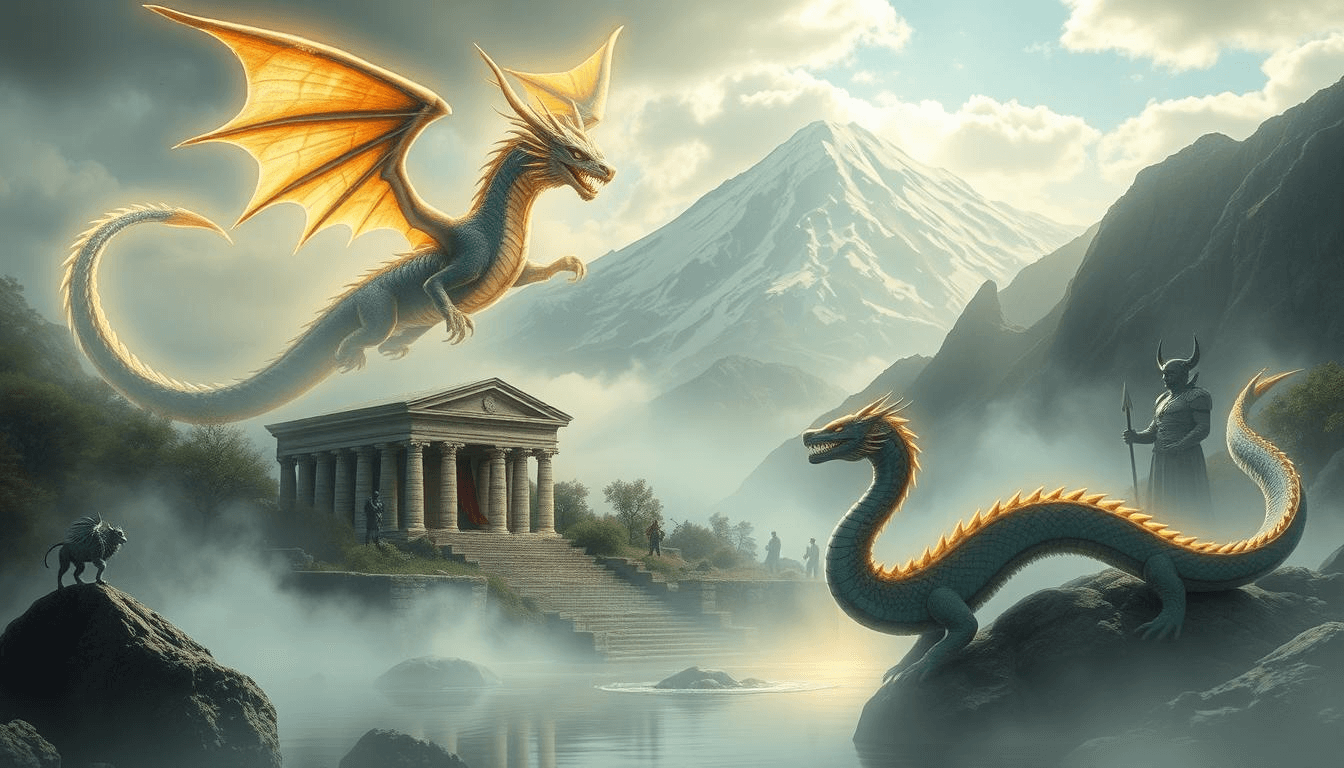
Death, Resurrection & Heroism
Aralez stories reveal a belief in life beyond death and the honor of a warrior’s sacrifice. Heroes often faced impossible odds to save their people, teaching courage and resilience.
Good vs Evil
Battles with serpent-kings and devs symbolize order triumphing over chaos. These myths reassured Armenians that evil could be defeated, even in dark times.
Sacred Landscapes
Mountains, rivers, and springs were sacred spaces. Vishap stones (Vishapakar) still stand today, carved with dragon images and serving as reminders of ancient rituals.
Modern Legacy & Influence
Armenian mythical creatures still shape culture today.
Folklore, Literature & Visual Arts
These stories live on in oral tradition, books, and visual art. Painters and sculptors continue to use mythical creatures like Vishaps as symbols of strength, survival, and identity.
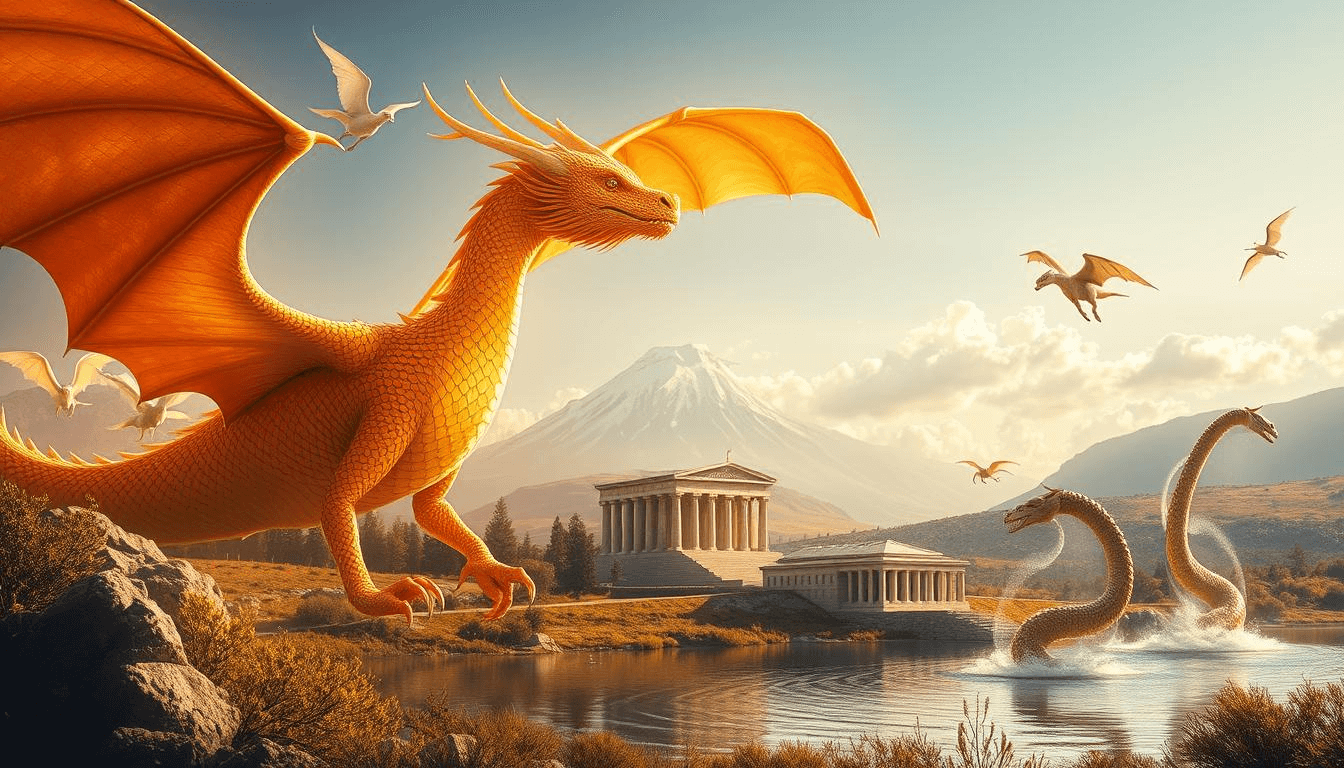
Archaeological Monuments
Vishap stones remain an important link to Armenia’s mythic past. Sites like Garni Temple and Etchmiadzin Cathedral show the blend of pagan and Christian heritage.
Popular Culture & Tourism
Tourism initiatives now highlight Armenia’s mythology, making it a unique draw for travelers. Films, books, and art inspired by these myths keep them alive for new generations.
Frequently Asked Questions
What are Armenian mythical creatures?
They are supernatural beings from Armenian mythology, including dragons, serpent-kings, spirits, and heroes.
Why are dragons important in Armenian myth?
Dragons (Vishaps) are linked to water, storms, and mountains. They represent both danger and protection.
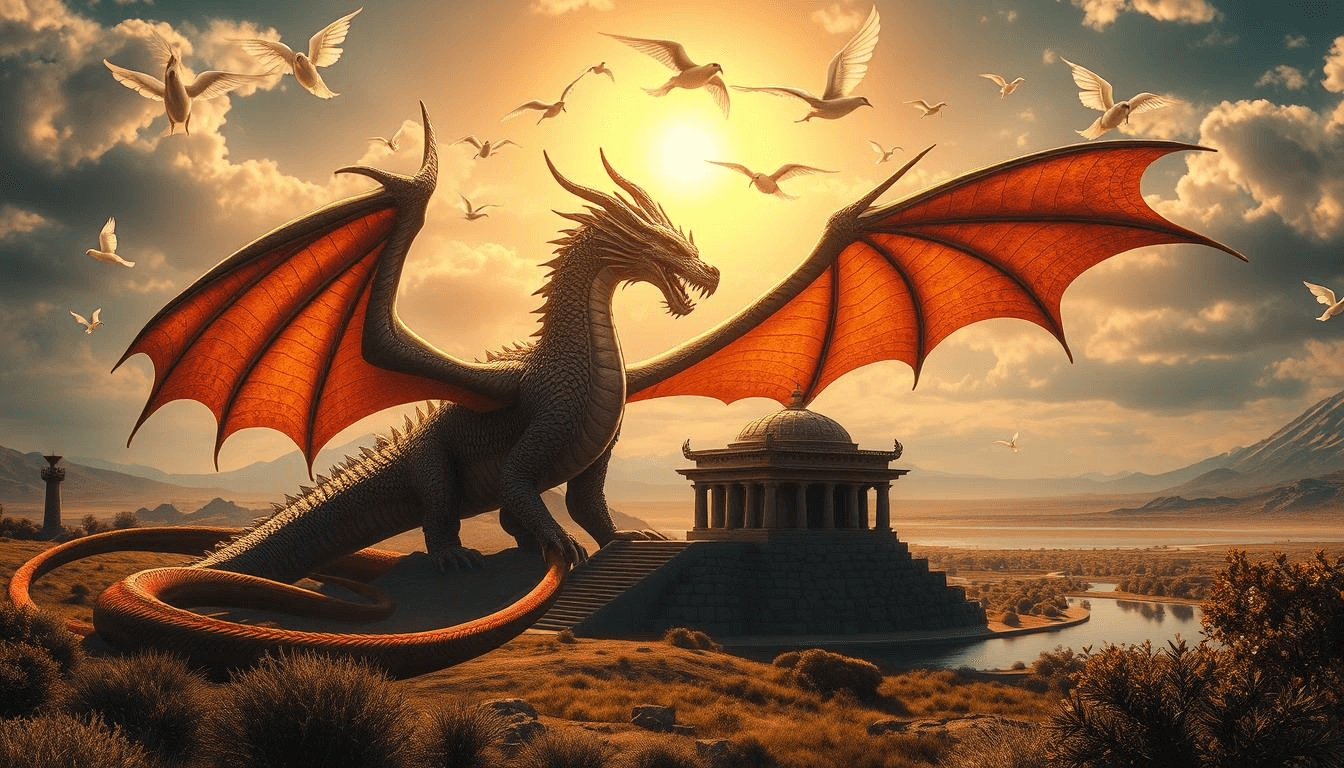
Where can I see Armenian myth in real life?
Vishap stones, temple ruins, and cultural festivals preserve these stories.
How do Armenian creatures compare to other mythologies?
They share similarities with Persian and Greek dragon myths. (See also Turkish Mythical Creatures for regional comparisons.)
Conclusion
Armenian mythical creatures are more than ancient stories—they are a window into Armenia’s history and soul. From the storm-bringing Vishap to the loyal Aralez, these beings reflect humanity’s relationship with nature, morality, and survival.
Exploring these myths deepens our understanding of Armenian culture and reminds us that even the oldest stories still have lessons for today.
To explore more regional legends and how neighboring cultures shaped each other’s beliefs, read about Azerbaijani mythical creatures and their folklore tales, where ancient spirits and heroes reveal the deep connections between myth and identity across the Caucasus.
You can also compare several Armenian legends with Iranian mythical creatures and their ancient origins to see how both cultures shaped their supernatural beings over thousands of years.
